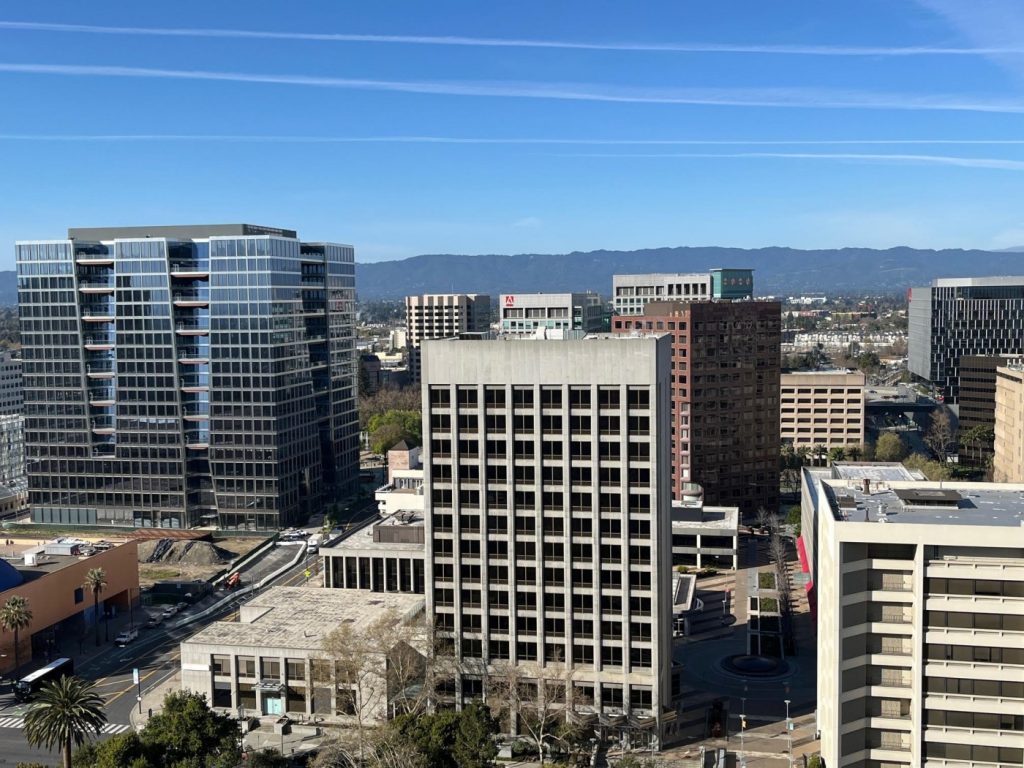Every year, the U.S. Census Bureau publishes data on the age and race of the country’s residents, an important view into how the population is changing over time. The newest data, which was just released, provides insight into exactly who lives in the Bay Area. It takes into account births, deaths, and who is coming and going, to create yearly estimates of population by county, race, age and sex. Those estimates are then used to make important policy and funding decisions.
“Population is a pretty good indicator for the general economic health of the region,” said Jeff Bellisario, executive director of the Bay Area Council Economic Institute.
“Generally, regions struggle to grow economically if they’re also struggling to grow their population … and that’s a bit where we are right now,” he said.
1) The Bay Area’s population continues to shrink
Bay Area counties saw some of the most dramatic population drops in the state — and country — at the beginning of the pandemic, and the data shows the region’s population has continued to drop. California’s population fell 1.5% between April 2020 and July 2023. Only one Bay Area county had a population drop smaller than that — Contra Costa County, which had a nearly 1% decrease over those three years.
While each Bay Area county, and the state as a whole, saw a smaller population decrease in 2023 than the year before, San Francisco was the only county in the region that grew last year, though it is still 7% down from July 2020.
2) California lost 1.2 million people to other states since April 2020
Since the decennial census was conducted in April of 2020, California has lost over 500,000 residents in total.
Nearly 1.4 million babies were born in the Golden State from April 2020 through July 2023, according to the census. Just over a million people died, leaving the state’s so-called “natural” population change in the positive.
Meanwhile, the state gained over 300,000 residents from international migration. If the calculations stopped there, the region might still be in the positive, but nearly 1.2 million people have moved out of state since April 2020, plunging the state into the negative, and fueling a years-long narrative of an exodus from the Bay Area.
“We saw a big drop off in population at the onset of the pandemic — that was true in high-cost places around the country,” Bellisario said. But while many of those other high-cost places have seen a rebound, “we seem to be a little different.”
Bellisario points, in part, to the Bay Area’s low birth rates, which he said could have “extreme implications for the education system … and our future workforce.”
“We’ve historically brought people in internationally,” he said, but that stream of new residents from other countries has also been disrupted in recent years.
Santa Clara County lost 126,000 residents in those three years and four months, while nearly 62,000 babies were born, and about 37,000 residents died. The county gained nearly 46,000 more from international migration, but those numbers are much lower than they once were before the Trump administration and COVID disrupted the flow of international migration to Silicon Valley.
3) Hispanic population is growing faster
Nationally, the population who identifies as Hispanic of any race is growing at a rate much faster than the non-Hispanic population. In the Bay Area as a whole, the Hispanic population is shrinking. But in Contra Costa County, the Hispanic population has grown every year since the April 2020 census.
The growth of the Hispanic population in Contra Costa County is part of the reason that the county has held onto its population better than other Bay Area counties and the state.
After a huge drop from 2020 to 2021, the Hispanic population of San Francisco has rebounded, from 5% below the April 2020 level in 2021 to just 3% below in 2023. The non-Hispanic population in San Francisco has dropped over 8% in the same time.
Despite Contra Costa County’s increase, the overall decrease among the Bay Area’s Hispanic population distinguishes the region from a national trend of fast-growing Hispanic populations.
4) There are more Asian residents of the Bay Area now than in April 2020
There are actually more Asian residents living in the five-county Bay Area now than in April of 2020. The nearly 50,000 more Asian residents is an increase of just over 2%. The Asian population was the only group to grow since April 2020, bucking the overall population drop of 3.5%.
The Asian population of the five-county Bay Area had become the largest racial group in the past several years, as the region’s White population has shrunk, by nearly 10% from 2.19 million in April 2020 to 1.98 million residents in July 2023.
Despite overall drops, from 2022 to 2023 there were a few groups whose population grew: those who identify as two or more races, and the Hispanic population, though both are still below 2020 numbers across the five-county Bay Area.
5) Bay Area continues to age
Related Articles
Bay Area school enrollment plunges as families flee high-cost region
‘I’m playing the lottery twice a week’: Newark councilman resigns, says he’s priced out of town
‘Grapes of Wrath’ legacy fades: California’s migrant farmworkers settle in, run their own farms
San Jose drops another spot down the list of most populous U.S. cities
Oakland’s homeless population rises 9%, Alameda County population dips 3%
The new data also shows that the Bay Area is continuing to age, with the median age growing in every Bay Area county since April 2020. The oldest now, San Mateo County, grew from a median age of 39.9 years to 41.5 years, meaning that as of July 2023 half of residents were older than that, and the other half were younger. And in those years, San Mateo County surpassed Contra Costa County, which had the highest median age in April 2020.
Santa Clara County was and remains the youngest county in the region, with a median age of 38.3 years.


